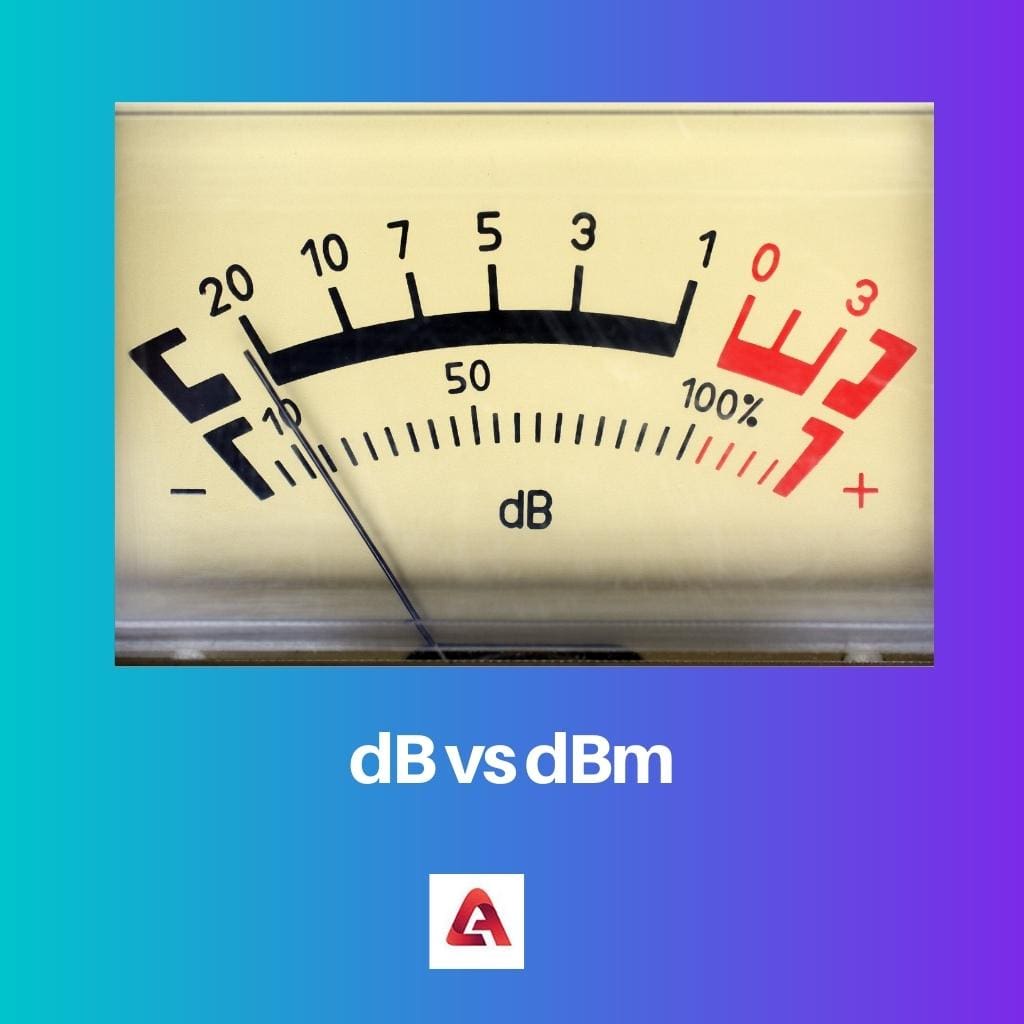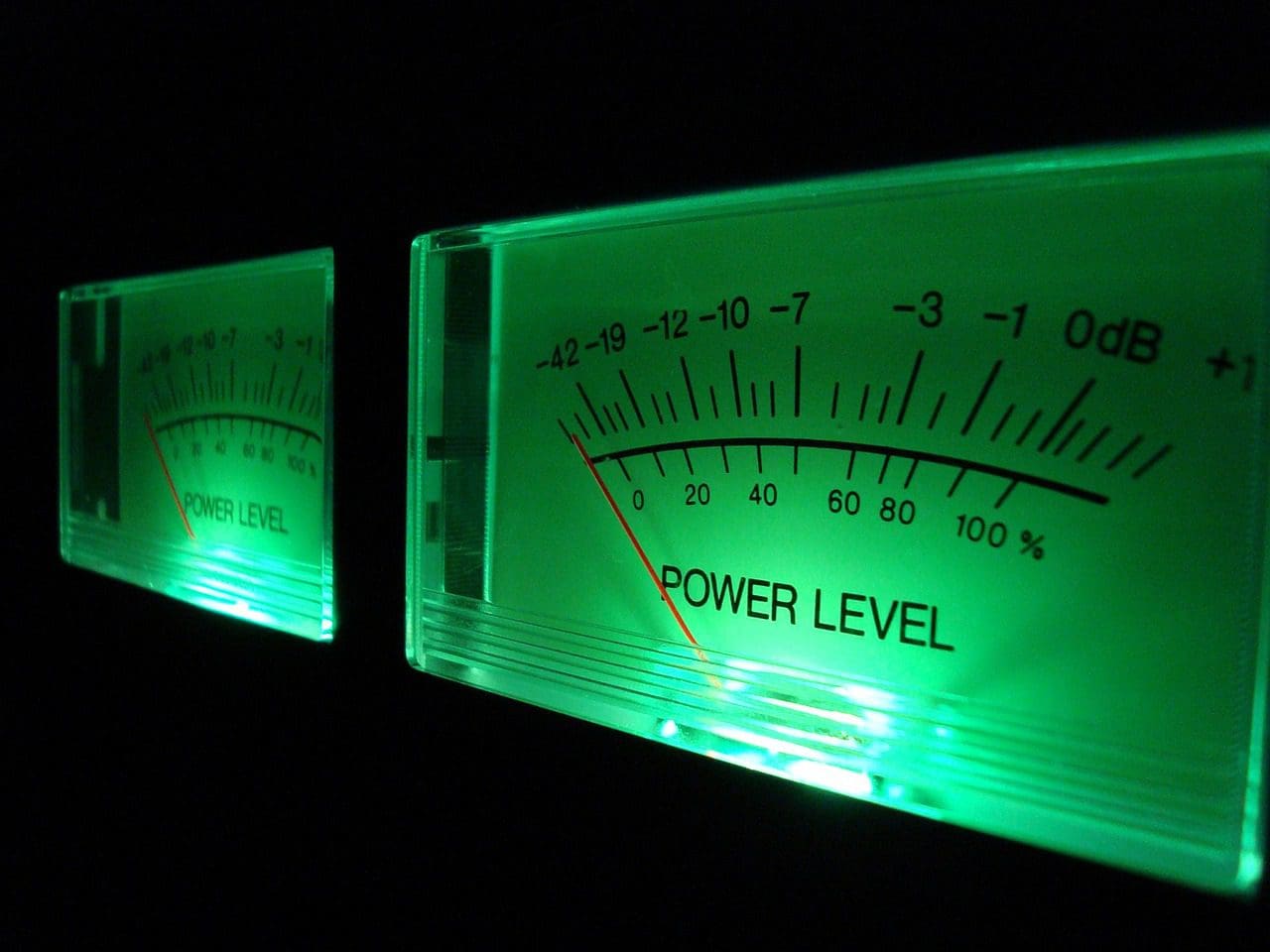dB is associated with the measurement of sound waves. However, its usage is extended to engineering, primarily used to calculate the ratio between the power levels at two distinct points in optic networks and cables.
dBm is the outright measure of the power intensity at only one point. It does not consider the difference in signal or power in the overall network.
Key Takeaways
- DB stands for Database, a collection of related data organized in a specific way. In contrast, DBM stands for Database Management, which refers to organizing, storing, and retrieving data from a database.
- DB is the physical representation of data in a structured format. At the same time, DBM is the software that manages the Database and provides tools to perform tasks such as data entry, querying, and reporting.
- DB is a static entity that cannot be modified unless explicitly updated, while DBM allows for dynamic changes to the database structure and content.
dB vs dBm
dB connotes a relative power, voltage, current, or signal strength difference between two points. dBm denotes the absolute measurement of power or signals at a given point in a cable.

dB essentially represents a ratio between the value measurements at two given points. dBm is the power measurement at a point in decibels referenced against one milliwatt (mW).
Comparison Table
| Parameters of Comparison | dB | dBm |
|---|---|---|
| Definition | dB is used to measure the difference in the power, voltage, or signal strength between two points in a cable or network. | dBm is used to measure the strength of a signal at a given point in the cable or network. |
| Full-Form | The abbreviation dB stands for Decibels. | The abbreviation dBm stands for Decibel Milliwatts. |
| Reference point | One dB is measured against the power input of an optical cable. | One dBm is measured against one milliwatt. |
| Nature of the Unit of Measurement | dB is a relative, dimensionless unit of measurement as it connotes a ratio between two 2 values. | dBm is an absolute measure of the signal strength at a particular point. |
| Uses in a Fiber-Optic Network | dB is used to connote the optical loss in a fibre-optic network. | dBm is used to connote the optical power in a fibre-optic network. |
What is dB?
dB is the shorthand used to refer to Decibels. It is a logarithmic ratio between the two power intensity values measured at two points in a wire, cable or network. As a dimensionless unit, dB is a relative value.
This unit of measurement is associated with the measurement of sound. However, it also calculates the intensity of power, signals, and current.
The utility value of this measuring system is stored in its ability to facilitate the convenient reduction of large values –by converting the values into ratios- into manageable integers. This helps make calculations easier for engineers and scientists.
dB is useful in measuring the increase or decrease of signal strength between two points in an amplifier system. This makes it an accepted measurement system in the discipline of acoustic electronics.
The formula for calculating 1 dB is as follows:
1 dB = 10 log (P1/P2)
P1 is the power intensity at the first point, and P2 is the power intensity at the second.

What is dBm?
dBm is the abbreviation used to connote Decibel Milliwatts. It is the absolute measure of power at a given point in the cable or network. Closely related to dB, dBm measures power at a given point of about one milliwatt. dBm is ten times the log of the signal strength in milliwatts.
It denotes the power an antenna can produce at any given point. dBm is also used in the study of optic signals. It defines the signal strength in various electronic equipment like wires, cables, signal boosters, etc. A strong signal of an amplifier will range around 70 dBm or higher, while a weaker signal will around 100 dBm or lower.
It is also used in the study of fibre optic networks. dBm is used to measure optical power in absolute terms. Hence, dBm can be classed as another unit of power that expresses the outright power value intensity at a point in milliwatts.
The formula for calculating 1 dBm is as follows:
1 dBm =10*log (P/1mW)
Where P stands for power in watts.

Main Differences Between dB and dBm
- The main difference between dB and dBm is that the former is the power or signal intensity difference between any two given points. In contrast, the latter is defined as power’s absolute value or intensity. The latter is used to determine signal strength at a particular point.
- The full form of each is different. The abbreviation dB stands for Decibels, while dBm is the commonly used abbreviation for Decibel Milliwatts.
- The absolute power or signal level signified by dBm is referenced against 1 milliwatt. On the other hand, dB measurements do not correspond to 1 milliwatt. dB values for a given optical cable are referenced against the power of the total input in the network.
- Unlike dB, dBm is an absolute unit of measurement. The former represents a relative number connoting the increase or decrease in signal strength. However, the latter connotes the absolute measure of the signal strength at a given point.
- The function of dB and dBm is different in a fibre-optic network. In a fibre optical network, optical power tends to be measured by the dBm unit of measurement, while optical loss is measured using the dB ratio measurement system.



